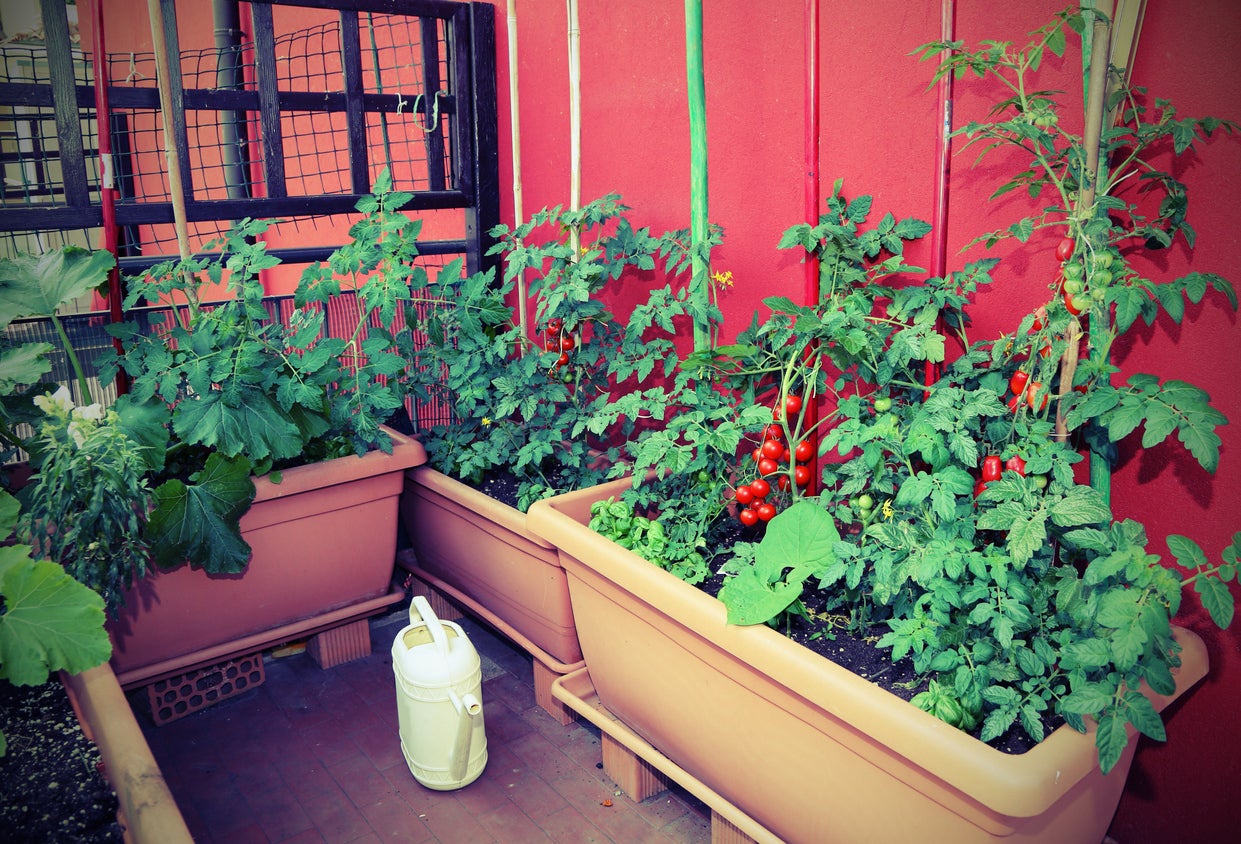Vegetable Gardening On A Patio: Learn How To Grow Patio Vegetables


Whether you're limited on space or time, gardening on a patio has many perks. For starters, it's much less labor-intensive than tilling, watering, and weeding a garden bed. Your freshly grown produce is often right outside the kitchen door for accessible culinary use. If your planters can be moved to a sheltered location, it's also a great way to stretch the growing season. You can plant your porch garden vegetables earlier and be the first gardener on the block to have ripe tomatoes!
How to Grow Patio Vegetables
Start by choosing a sunny location for your patio vegetable garden. Most garden plants require at least six hours of direct sunlight per day. Ideally, your location for growing vegetables on your porch will be near a faucet to facilitate watering, and the overall layout will be aesthetically pleasing.
Next, determine how much room you have for growing vegetables on your porch. How many planters or pots will the space comfortably hold? But don't limit yourself to the available ground space. Consider hanging baskets as well as methods for tower and vertical gardening on a patio.
When it's time to select growing containers for porch garden vegetables, bigger is better. Larger pots and planters dry out less quickly and give plenty of room for root growth. Most garden vegetable plants aren't deep rooted, so tall containers have no benefit over shorter ones of the same width.
Planters can be made of any material such as plastic, clay, metal or wood, but they shouldn't contain or have held toxic chemicals. For budget-minded patio gardeners, 5-gallon buckets with drainage holes drilled in the bottom work great.
Once you have your containers and know their layout, it's time to pick a soil mix. Bagged potting soil works great for a patio vegetable garden. If available, add compost, vermiculite or peat moss to improve the soil quality. Reusing the same dirt year after year is not recommended, as it can harbor disease and insects.
Porch garden vegetables usually need to be watered at least once daily and often twice if high temperatures or windy conditions prevail. To improve growth and yields, fertilize periodically. Control garden pests, like aphids, with safe insecticidal sprays or remove larger pests, like tomato worms, by hand.
Gardening tips, videos, info and more delivered right to your inbox!
Sign up for the Gardening Know How newsletter today and receive a free copy of our e-book "How to Grow Delicious Tomatoes".
Choosing Porch Garden Vegetables
Many different types of garden vegetables grow well in containers, but some work better in certain kinds of containers and others have specific “patio” varieties. First time gardeners will generally have more success transplanting seedlings rather than sowing seeds. If this is your first time gardening on a patio, try these easy-to-grow vegetables:
- Tomatoes
- Peppers
- Herbs
- Potatoes
- Sweet potatoes
- Lettuce
- Cucumbers
- Carrots
- Onions
- Bush beans
- Spinach
- Squash
- Swiss Chard
- Radishes
On a final note, when gardening on a balcony or deck, be conscious of the amount of weight you're adding. Several large planters with wet soil can easily exceed the weight limit of the structure.

Laura Miller has been gardening all her life. Holding a degree in Biology, Nutrition, and Agriculture, Laura's area of expertise is vegetables, herbs, and all things edible. She lives in Ohio.
-
 Looking For Plants To Give You The Soft And Fuzzies? Try These 5 Fuzzy Leaf Plant Options
Looking For Plants To Give You The Soft And Fuzzies? Try These 5 Fuzzy Leaf Plant OptionsLovers of texture, drama, silver foliage and tactile plants will adore these special sensory garden additions. These fuzzy leaf plant options will leave you all aglow
By Susan Albert
-
 Get Ready For A Summer Of Hummers! Grow These Full Sun Hummingbird Plants and Flowers
Get Ready For A Summer Of Hummers! Grow These Full Sun Hummingbird Plants and FlowersIf you’re lucky enough to enjoy a sunny backyard, make sure you are maxing out on your pollinator opportunities and grow these full sun hummingbird plants and flowers
By Tonya Barnett